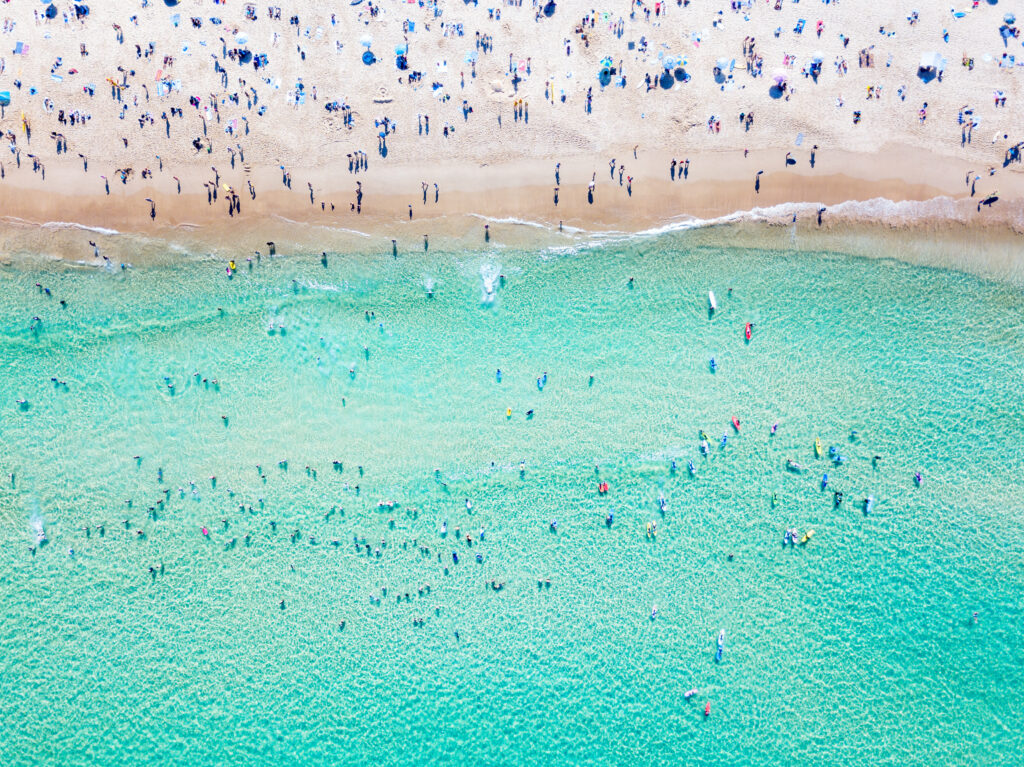Studying in Australia, you might often imagine yourself enjoying a sunny day at the beach, or relaxing at a local creek or swimming pool.
And it’s no wonder! Spending time at any of Australia’s 10,685 picturesque beaches is like experiencing a slice of paradise.
However, it’s important to be aware that beaches and waterways can have hidden dangers. There were almost 10,000 rescues and 40,000 first aid treatments by lifeguards and lifesavers on Australian beaches last year.
If you’re planning a water outing, we’ve prepared this guide to ensure you stay safe and enjoy your day to the fullest.
Before you go…
- Pack sunscreen (even if it’s cloudy, the Aussie sun is strong!).
- Pack a fully charged phone.
- Never go swimming alone. Grab a friend or two, and tell someone where you’re going before you leave.
Get the timing right
- Check the weather forecast before you head out. If there are heavy rains or storms incoming, consider postponing until another time.
- Don’t ever go swimming if you’ve been consuming alcohol or drugs.
- Never swim at dusk or at night.
- Avoid swimming if you have an open wound or infection.
Pick the right spot
Beaches
- Never swim at an unpatrolled beach.
- Pick somewhere where you’ll have someone to help you out should things go wrong.
- Look for any signs and follow their instructions.
- When at the beach, always swim between the red and yellow flags. This is the spot that’s been deemed safest for swimming (learn more about flags and their meaning from Beach Safe).
- Learn how to identify a rip, read our article on Beach Safety for instructions on identifying rip currents and other beach day tips.
Inland waters
- Think twice about swimming in inland waters, as there are no patrols and more people drown in inland waterways than at the beach.
- Make sure you’re not alone when you swim.
- Don’t swim in water that looks murky, or smells bad.
- Check for signs and follow their instructions.
- Never swim in drains or dams.
Getting in the water
- Don’t dive into the water, you may overestimate the depth and this can have very serious consequences.
- Walk in slowly and keep an eye out for submerged objects.
Emergencies
- If you ever find yourself in trouble while swimming, try to stay calm and raise your hands to show that you need help.
- If you see someone else in distress in the water, emergency dial Triple Zero (000) for Police.
Creepy crawlies in the water
There are a few dangerous animals that hang around in Australian waters. While it’s unlikely that you’ll come across many of them, it’s good to know what to look out for.
Crocodiles
You should never go swimming in places where there are known to be crocodiles. The two types of Australian crocodiles, the Saltwater and the Freshwater are both found in Northern Australia. Obey any crocodile warning signs that you see and if you’re not sure it’s safe, check with local rangers. The Northern Territory Government offer some helpful information to stay ‘Crocwise‘.
Jellyfish
As a general rule, avoid all jellyfish (that includes those washed up on the shore). If you feel any kind of sting during or after swimming, seek first aid. In particular, watch out for box jellyfish, (found along the north Queensland coast, past Great Keppel Island) and the bluebottle (found in eastern and southern Australian waters).
Blue-ringed octopus
If you see this pretty octopus in the water or washed up on the shore, leave it alone! With a strong beak and paralysing venom, they’re one of the deadliest animals in the sea.
Stingrays
While stingrays are usually docile, they can act out in self-defence if provoked. For this reason, it’s best to give stingrays some space while swimming, so that they don’t feel threatened.





